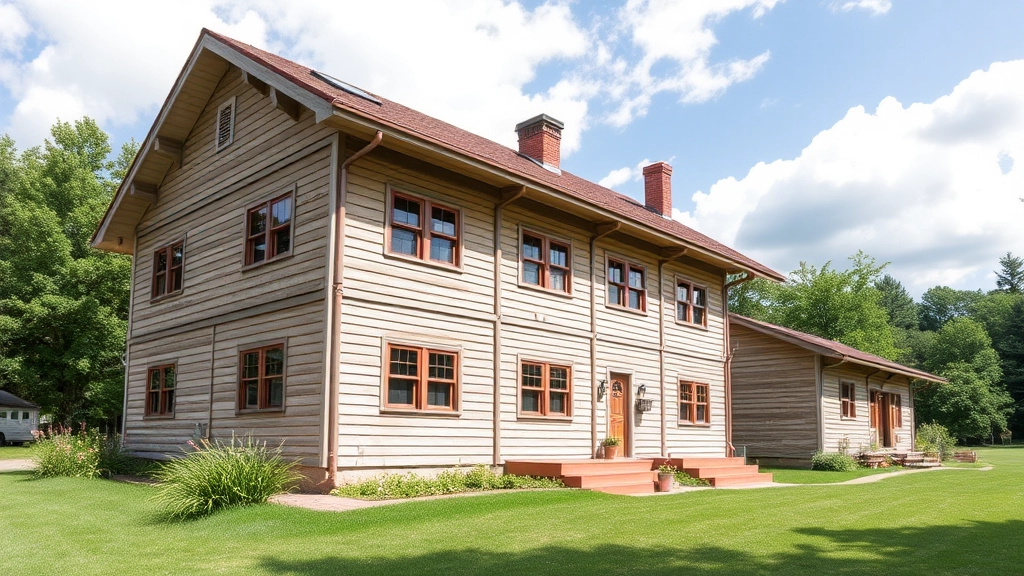Building the Perfect Summer Camp
Building the perfect summer camp is no small feat, but it’s a journey full of exciting possibilities. From essential facilities to sustainable practices, every detail counts. In this article, we’ll explore the key elements that make a summer camp building not just functional, but extraordinary. Whether you’re planning a new camp or revamping an old one, we’ve got you covered with practical tips and inspiring examples.
We’ll dive into design considerations, cost-effective solutions, and the latest trends in camp architecture. You’ll learn how to integrate nature, ensure safety, and choose the right architectural style to create an unforgettable camp experience. Ready to transform your summer camp building? Let’s get started!
Key Elements of a Summer Camp Building
Alright, let’s dive into the nitty-gritty of what makes a summer camp building tick. Whether you’re planning to build a new camp or revamp an old one, understanding the key elements is crucial. So, what’s the deal with summer camp buildings? What do you really need to focus on? Let’s break it down.
Foundation and Structure
First things first, the foundation and structure are the backbone of any summer camp building. Without a solid foundation, everything else is just window dressing. Here’s what you need to look out for:
- Durability: The building needs to withstand the elements. Think about heavy rain, wind, and even the occasional snowstorm.
- Flexibility: Can the structure be easily modified or expanded? Camps grow, and your buildings should be able to grow with them.
- Safety: This is non-negotiable. The building must meet all safety codes and regulations.
Functionality and Layout
Next up, let’s talk about functionality and layout. A summer camp building isn’t just a place; it’s a hub of activities.
- Multi-purpose Rooms: These are a must. Think about spaces that can be used for arts and crafts one day and a talent show the next.
- Storage: Camps come with a lot of gear. Make sure you’ve got ample storage for everything from sports equipment to arts supplies.
- Accessibility: Your layout should be inclusive. Ramps, wide doorways, and accessible bathrooms are essential.
Comfort and Amenities
Comfort might not be the first thing that comes to mind, but it’s a game-changer. Happy campers are comfy campers.
- Climate Control: Whether it’s the heat of summer or a chilly evening, your building should offer a reprieve from the elements.
- Restrooms and Showers: Clean, functional, and enough of them. No one likes waiting in line.
- Dining Areas: A place to eat and socialise is crucial. Think about a large, communal dining hall.
Aesthetic Appeal
Yeah, it’s a camp, but that doesn’t mean it should look like a shack. A bit of aesthetic appeal goes a long way.
- Natural Integration: Blend the building with its surroundings. Use materials that complement the natural environment.
- Welcoming Atmosphere: Bright, open spaces make a world of difference. Think large windows and open floor plans.
- Themed Decor: A bit of thematic decor can make the camp experience more immersive and fun.
Technology and Connectivity
We’re in the 21st century, folks. Even camps need to keep up with the times.
- Wi-Fi: Yes, even at camp. It’s essential for staff and for emergencies.
- Security Systems: Cameras, alarms, and secure access points. Safety first.
- Power Supply: Reliable and sustainable power sources are key. Think about solar panels or other renewable energy options.
Maintenance and Upkeep
Last but not least, think about the long-term. How easy is it to maintain the building?
- Durable Materials: Choose materials that are easy to clean and maintain.
- Regular Inspections: Schedule regular inspections to catch any issues before they become big problems.
- Staff Training: Make sure your staff knows how to maintain the building and handle minor repairs.
So, there you have itâthe key elements of a summer camp building. Nail these, and you’re well on your way to creating a space that’s not just functional but also a joy to be in. Keep it real, keep it fresh, and remember, the devil’s in the details.
For more tips on designing your camp, check out our complete guide to building a wooden arch and cabin guide for types, features, and safety.
Essential Facilities for a Successful Summer Camp
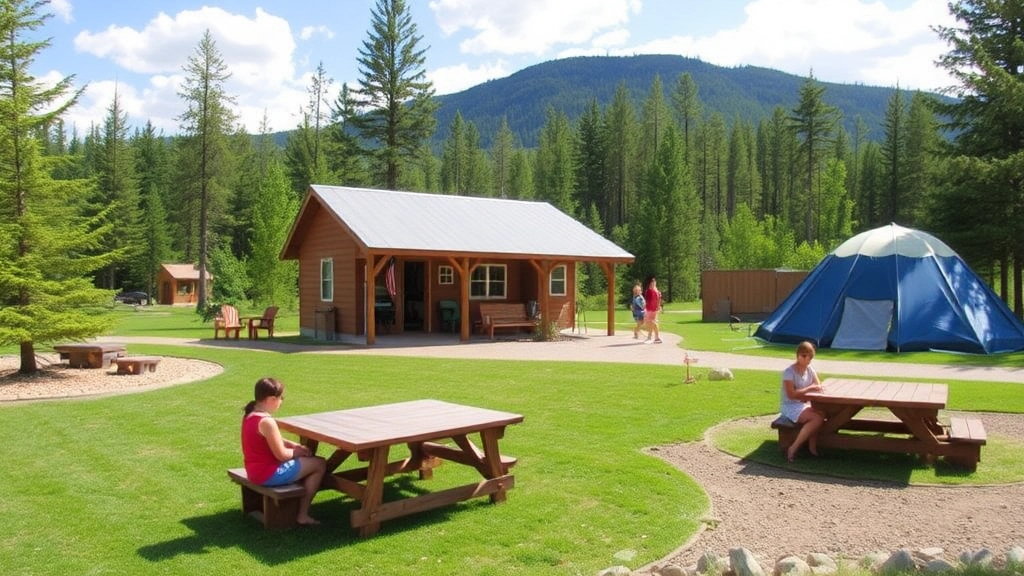
Ever worried about what makes a summer camp truly rock?
Let’s break it down.
Why Facilities Matter
Imagine a camp without proper facilities.
Chaos, right?
A successful summer camp needs the right stuff to keep everyone happy and safe.
Must-Have Facilities
- Accommodation
- Cabins or Tents: Comfortable and safe.
- Bathrooms: Clean and accessible.
- Dining Area
- Mess Hall: Big enough for everyone.
- Kitchen: Equipped for all dietary needs.
- Recreation Spaces
- Sports Fields: Football, basketball, you name it.
- Swimming Pool or Lake: For those hot summer days.
- Activity Centres
- Arts and Crafts Room: Unleash creativity.
- Adventure Zone: Climbing walls, zip lines, etc.
- Medical Facilities
- First Aid Station: Always ready for emergencies.
- On-Site Nurse: Peace of mind for everyone.
Real-Life Example
Think about Camp Sunshine.
They nailed it with their facilities.
Kids rave about the awesome sports fields and creative arts centre.
Design Tips for Camp Facilities
- Flexibility: Spaces that can serve multiple purposes.
- Durability: Materials that withstand the elements.
- Accessibility: Easy access for everyone, including those with disabilities.
Design Considerations for Summer Camp Structures
Alright, let’s talk about something that’s on every camp director’s mind: design considerations for summer camp structures. I get itâbuilding a summer camp isn’t just about throwing up some cabins and calling it a day. There are real questions and worries here. How do you create a space that’s both functional and welcoming? How do you make sure it’s a place kids will love but also a space that meets all the practical needs? Let’s break it down.
What Makes a Summer Camp Structure Stand Out?
First off, we need to think about the core elements that make a summer camp structure effective and engaging:
- Functionality: Every building needs to serve a specific purpose. Whether it’s dining halls, sleeping quarters, or activity areas, each structure should be designed with its function in mind.
- Durability: Kids are rough on buildings. We need materials that can withstand some wear and tear.
- Aesthetics: Let’s be real, nobody wants to stay in an ugly building. The design should be visually appealing to create a welcoming atmosphere.
- Flexibility: Spaces should be adaptable for different activities and needs. Think multi-purpose rooms that can be used for arts and crafts one day and a dance party the next.
Essential Design Features
When we dive deeper, there are a few key features every summer camp structure should have:
- Open Spaces: Kids need room to roam. Open spaces inside buildings provide flexibility and a sense of freedom.
- Natural Light: Big windows and skylights make a huge difference. Natural light not only saves on electricity but also boosts everyone’s mood.
- Ventilation: Proper airflow is crucial, especially in the summer months. Nobody wants to be stuck in a stuffy room.
- Storage: Camps have a lot of gear. From sports equipment to arts supplies, ample storage is a must.
Real-Life Examples
Let’s sprinkle in some real-life examples to make this more relatable. Picture a camp in the UK where the dining hall doubles as a meeting room. They use foldable tables and stackable chairs to quickly switch the space from meal times to activity sessions. This kind of flexibility is gold.
Or think about a camp that uses sustainable materials like reclaimed wood and solar panels. Not only are they eco-friendly, but they also teach kids the importance of sustainability. We’ll dive deeper into sustainable practices in Section IV, but you get the idea.
Practical Tips for Design
Here are some practical tips to keep in mind:
- Consult with Experts: Architects and designers who specialize in camp structures can offer invaluable insights.
- Involve the Camp Community: Get input from staff and even campers. They can provide perspectives you might not have considered.
- Plan for Growth: Design with the future in mind. Camps often expand, so consider how new buildings will fit into the existing layout.
- Safety First: We’ll cover this in more detail in Section V, but safety should always be a top priority.
Bringing It All Together
So, there you have it. The design considerations for summer camp structures boil down to balancing functionality, durability, aesthetics, and flexibility. By paying attention to these elements, you can create a space that’s not only practical but also a joy to be in.
If you’re interested in learning more about the different types of cabins and their features, check out our Summer Camp Cabin Guide. For those looking to explore more about summer camp culture and traditions, our detailed post on Summer Camp Culture offers a deep dive into what makes camp life so special.
Sustainable Building Practices for Summer Camps
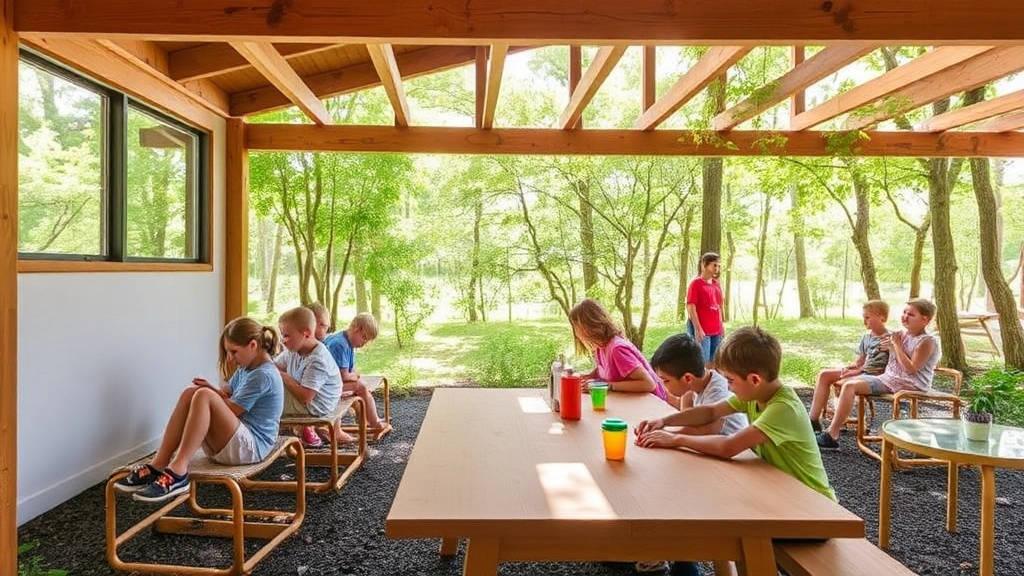
Alright, let’s talk sustainable building practices for summer camps. Ever thought about how much waste a summer camp can generate? Or how much energy it consumes? Yeah, it’s a lot. Sustainability isn’t just a buzzword. It’s a necessity.
Why Go Sustainable?
- Cost Savings: Less energy use means lower bills.
- Healthier Environment: Cleaner air and water for everyone.
- Positive Image: Parents love sending their kids to eco-friendly camps.
Key Sustainable Practices
Energy Efficiency:
- Solar Panels: Harness the sun. It’s free energy.
- LED Lighting: Uses less power and lasts longer.
- Insulation: Keeps buildings warm in winter and cool in summer.
Water Conservation:
- Low-Flow Fixtures: Save water without sacrificing comfort.
- Rainwater Harvesting: Collect and use rainwater for landscaping.
- Greywater Systems: Recycle water from sinks and showers.
Eco-Friendly Materials:
- Recycled Content: Use materials made from recycled products.
- Local Sourcing: Cuts down on transportation emissions.
- Non-Toxic Paints and Finishes: Better for the environment and your health.
Waste Management:
- Recycling Programs: Make it easy for campers to recycle.
- Composting: Turn food waste into valuable compost.
- Minimal Packaging: Reduce waste from the start.
Real-World Examples
Remember that camp you loved as a kid? Imagine it with solar panels and a composting program.
- Camp Sunshine: They installed solar panels and cut their energy bill by 50%.
- Eco-Camp: They use composting toilets and save thousands of litres of water each year.
Design Tips for Sustainability
- Natural Ventilation: Use windows and vents to keep air flowing.
- Green Roofs: They insulate buildings and reduce stormwater runoff.
- Orientation: Position buildings to take advantage of natural light and shade.
Future Trends
- Smart Technology: Automated systems to control lighting and temperature.
- Biophilic Design: Integrating nature into building design.
- Net-Zero Buildings: Camps that produce as much energy as they use.
Safety Features in Summer Camp Construction
Alright, let’s talk about something crucialâsafety features in summer camp construction. If you’re running a summer camp, you know that nothing is more important than keeping everyone safe. So, what are the key elements you need to focus on? Let’s break it down.
Why Safety Matters
Ever worried about sending your kids to a summer camp? You’re not alone. Safety is the number one concern for parents and camp organisers alike. From fire hazards to structural integrity, there’s a lot to think about. So, how do we ensure that everyone has a fun and safe experience?
Key Safety Features to Consider
Fire Safety
- Fire Alarms and Smoke Detectors: These should be installed in every building. Make sure they’re regularly tested.
- Fire Extinguishers: Place them in accessible locations and ensure staff know how to use them.
- Evacuation Plans: Clearly marked exits and regular fire drills are a must.
Structural Integrity
- Quality Materials: Use durable materials that can withstand weather conditions.
- Regular Inspections: Have professionals inspect buildings regularly for any signs of wear and tear.
- Proper Maintenance: Keep up with repairs to avoid any potential hazards.
First Aid and Medical Facilities
- First Aid Kits: These should be readily available in multiple locations.
- Trained Staff: Have staff trained in basic first aid and CPR.
- Medical Room: A dedicated space for medical emergencies can be a lifesaver.
Safe Outdoor Spaces
- Playground Safety: Ensure playgrounds are built to safety standards.
- Trail Markings: Clearly mark trails and ensure they are free from hazards.
- Water Safety: If you have a pool or lake, ensure lifeguards are always on duty and that life jackets are available.
Security Measures
- Fencing and Gates: Secure the perimeter to prevent unauthorised access.
- Surveillance Cameras: Install cameras in key areas for added security.
- Visitor Logs: Keep track of who enters and exits the campgrounds.
Real-Life Example
Let me tell you about Camp Sunshine. They had a close call with a fire a few years back. Thanks to their well-maintained fire alarms and quick evacuation plan, everyone got out safely. They even had a fire drill just a week before the incident. That’s the kind of preparation that saves lives.
Internal Linking Opportunities
Want to know more about essential facilities for a successful summer camp? Check out our section on summer camp schedule activities. Interested in sustainable practices? Our guide on summer camp culture and activities has got you covered.
Popular Architectural Styles for Summer Camp Buildings
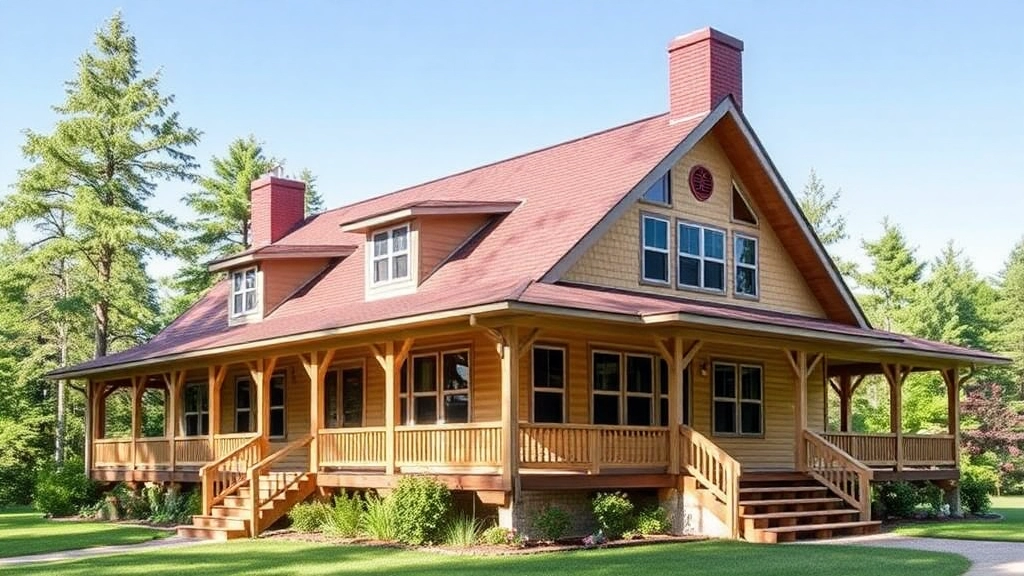
Ever wondered what makes a summer camp building feel just right?
Is it the rustic charm or the modern vibe?
Let’s dive in.
Why Architectural Style Matters
The architectural style sets the tone for the entire camp experience.
It’s not just about looks; it’s about how it makes us feel.
Whether you’re aiming for nostalgia or innovation, the style speaks volumes.
Classic Cabin Style
Think wooden beams and stone fireplaces.
This style screams “traditional camp.”
It’s cosy, inviting, and connects us to nature.
Key Features:
- Natural Materials: Wood and stone create a warm, earthy feel.
- Open Spaces: Large communal areas for gatherings.
- Simple Design: Keeps it functional and practical.
Modern Minimalism
For those who want sleek and clean.
Modern minimalism is all about simplicity and efficiency.
Key Features:
- Clean Lines: No fuss, no clutter.
- Glass and Steel: Embrace the outdoors with large windows.
- Sustainable Practices: Energy-efficient designs.
Eco-Friendly Designs
Eco-friendly is more than a trend; it’s a necessity.
These designs focus on sustainability and harmony with nature.
Key Features:
- Renewable Materials: Bamboo, recycled wood, etc.
- Green Roofs: Helps with insulation and blends with the environment.
- Solar Panels: Because who doesn’t love saving on energy?
Story Time: A Camp That Got It Right
There’s this camp I visited once.
They nailed it with a mix of classic and modern styles.
Imagine a traditional log cabin with solar panels.
A perfect blend of old and new.
Choosing the Right Style
So, how do you pick the right style for your camp?
Consider your audience and the vibe you want to create.
Do you want them to feel like they’re stepping back in time or into the future?
Cost-Effective Solutions for Camp Construction
Alright, let’s talk about what everyone’s really worried about: how to build a summer camp without breaking the bank. If you’re in the game of creating a memorable summer camp experience, you know that costs can spiral out of control fast. So, how do we keep it real and keep it affordable? Here’s the lowdown.
Start With a Solid Plan
First things first, you need a rock-solid plan. Too many folks dive into construction without a clear vision, and that’s a surefire way to blow your budget. Here’s what you can do:
- Detailed Planning: Outline every single element you need. From cabins to dining halls, list it all out.
- Prioritise: What are the must-haves versus the nice-to-haves? Focus on the essentials first.
- Phased Construction: Build in phases if you can. Start with the basics and expand as funds allow.
Use Affordable Materials
You don’t need the fanciest materials to make a great camp. Here are some cost-effective options:
- Recycled Materials: Think reclaimed wood, recycled steel, or even repurposed shipping containers.
- Local Sourcing: Use materials that are easily available in your area. It cuts down on transportation costs.
- Prefabricated Structures: These can be cheaper and quicker to assemble than traditional buildings.
DIY Where Possible
Labour costs can eat up a huge chunk of your budget. Here’s how to minimise that:
- Volunteer Labour: Get parents, community members, or even older campers involved in the construction process.
- Skill Swaps: Trade services with local tradespeople. Maybe offer them a free camp session for their kids in exchange for their expertise.
- Training Workshops: Host workshops to teach basic building skills. It’s a win-win; you get free labour, and they get valuable skills.
Energy Efficiency
This is where you save money in the long run. Energy-efficient buildings might cost a bit more upfront, but they pay off:
- Insulation: Proper insulation reduces heating and cooling costs.
- Solar Panels: Invest in solar panels to cut down on electricity bills.
- LED Lighting: Switch to LED lights. They last longer and use less energy.
Multi-Purpose Spaces
Why build multiple buildings when one can do the job? Here’s how to think multi-purpose:
- Convertible Rooms: Design spaces that can serve multiple functions. A dining hall that doubles as a meeting room, for example.
- Modular Furniture: Use furniture that can be easily moved and reconfigured.
- Outdoor Spaces: Utilise the great outdoors for activities whenever possible. Nature is free!
Stories and Examples
Let’s keep it real with some stories. I remember visiting a camp where they used old school buses as bunkhouses. They gutted the interiors, added some insulation, and voila! Instant, affordable housing. Another camp I saw used local timber and volunteer labour to build an amazing amphitheatre. It was a community effort, and it saved them a ton of money.
For more detailed insights, check out our Top Features of Summer Camp Buildings and Build a Summer Camp Wooden Arch: A Complete Guide for practical tips and ideas.
Integrating Nature into Camp Building Designs
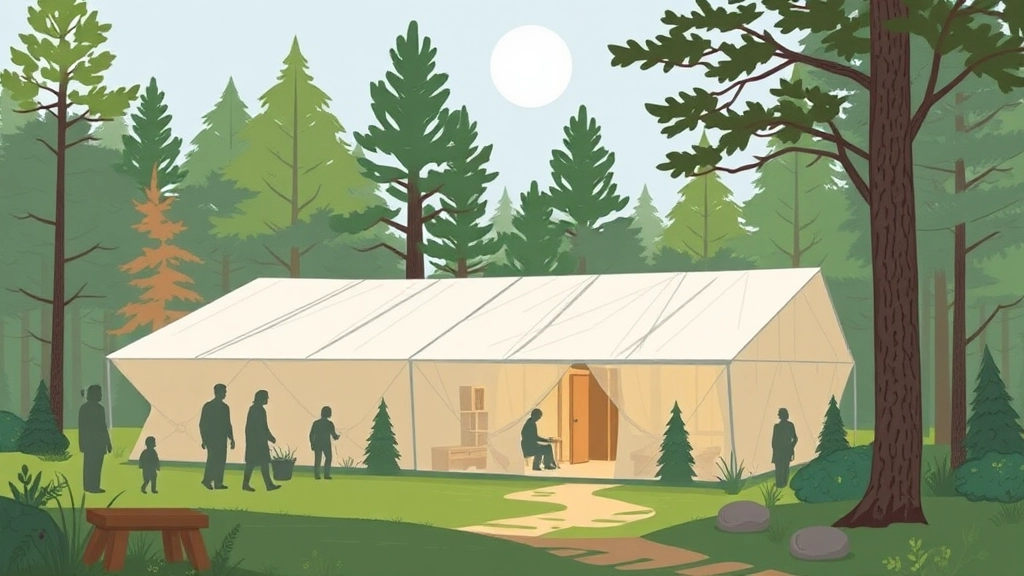
Ever wondered how to make your summer camp building blend seamlessly with nature?
I get it.
You want a place where kids can feel the breeze and hear the birds, not just see four walls.
So, how do you do that?
Let’s dive in.
Why Integrate Nature?
Nature isn’t just a backdrop; it’s a key player in the summer camp experience.
Kids come to camp to escape the indoors.
They want to feel connected to the earth, the trees, and the sky.
Integrating nature into your camp design can:
- Boost Creativity: Natural surroundings can spark imagination.
- Enhance Well-being: Fresh air and greenery can reduce stress.
- Promote Learning: Nature provides endless teaching opportunities.
Practical Tips to Blend Buildings with Nature
Alright, let’s get practical.
How can you actually blend your camp buildings with the natural environment?
Here are some actionable tips:
- Use Natural Materials: Think wood, stone, and bamboo. They blend in and look fantastic.
- Large Windows: Let the outside in. Big windows mean more natural light and better views.
- Green Roofs: Plant some grass or even a garden on your roofs. It’s eco-friendly and beautiful.
- Open Spaces: Create open-air pavilions or outdoor classrooms. Less wall, more nature.
- Natural Landscaping: Use native plants and trees around your buildings. It’s low maintenance and looks great.
Real-life Examples
Let me share a story.
There’s this camp in the Lake District.
They built treehouses as cabins.
Yeah, you heard that right.
Kids sleep in the trees, surrounded by nature.
It’s a hit.
Another camp in Wales uses recycled wood for all their buildings.
They even have a garden on the roof of their dining hall.
That’s how you do it.
Challenges to Watch Out For
Of course, it’s not all sunshine and rainbows.
There are challenges.
- Weather: Nature can be unpredictable. Make sure your buildings can withstand the elements.
- Maintenance: Natural materials can require more upkeep. Plan for it.
- Cost: Sometimes, eco-friendly materials can be pricier. But think long-term savings.
Future Trends
What’s next in integrating nature into camp designs?
- Biophilic Design: This is about creating a strong connection between the indoor and outdoor environments.
- Sustainable Tech: Solar panels, rainwater harvesting, and composting toilets are becoming more common.
Integrating nature into your camp building design isn’t just a trend.
It’s about creating a place where kids can truly connect with the world around them.
And trust me, they’ll thank you for it.
So, ready to bring the outdoors in?
Let’s make it happen.
Case Studies of Successful Summer Camp Buildings
Ever wondered what makes a summer camp building truly successful? Let’s dive in and explore some real-life examples that can inspire your next project.
What Makes a Camp Building Stand Out?
Before we jump into the case studies, let’s talk about what really matters. When it comes to summer camp buildings, we’re all looking for:
- Functionality: Does it serve its purpose well?
- Sustainability: Is it eco-friendly?
- Safety: Are the kids safe?
- Integration with Nature: Does it blend with the surroundings?
These are the key questions every camp director and architect grapples with.
Case Study 1: Green Lake Camp
Green Lake Camp is a shining example of how to integrate nature into design. Nestled in a lush forest, this camp uses local materials and has minimal impact on the environment.
Key Features:
- Eco-Friendly Materials: Think reclaimed wood and natural stone.
- Open-Air Design: Allows for natural ventilation and light.
- Rainwater Harvesting: Provides water for non-drinking purposes.
Why It Works:
- Seamless Integration: The buildings almost disappear into the landscape.
- Cost-Effective: Using local materials saved on transportation costs.
Case Study 2: Camp Future Vision
At Camp Future Vision, innovation meets tradition. This camp is all about futuristic design with a nod to classic camp vibes.
Key Features:
- Modular Buildings: Easy to expand or modify.
- Smart Technology: Automated lighting and climate control.
- Solar Panels: Provides a sustainable energy source.
Why It Works:
- Flexibility: The modular approach allows for easy updates.
- Energy Efficiency: Lower energy bills thanks to solar power.
Case Study 3: Heritage Hills Camp
Heritage Hills Camp is where history and modernity collide. This camp preserves historical architecture while adding modern amenities.
Key Features:
- Restored Historical Buildings: Maintains the original charm.
- Modern Additions: Includes updated kitchen and bathroom facilities.
- Community Spaces: Large areas for group activities.
Why It Works:
- Cultural Value: Preserving history attracts more visitors.
- Balanced Design: Combines old-world charm with modern needs.
Lessons Learned from Successful Camps
So, what can we take away from these examples? Here’s the lowdown:
- Use Local Materials: Saves money and blends with the environment.
- Think Modular: Flexibility is key for future needs.
- Prioritise Sustainability: It’s not just a trend; it’s a necessity.
- Embrace Technology: Smart systems can make life easier and save costs.
Future Trends in Camp Architecture
Looking ahead, we can expect more emphasis on sustainability and technology. Camps will likely adopt even more innovative designs that cater to both function and aesthetics.
For more detailed guidance on creating functional and attractive camp environments, check out our Top Features of Summer Camp Buildings article. And if you’re looking for inspiration on how to integrate nature into your camp design, our guide on building a summer camp wooden arch is a must-read!
Future Trends in Summer Camp Architecture
Ever wondered what the future holds for summer camp architecture?
You’re not alone.
With changing needs and evolving technology, the landscape is shifting.
Let’s dive into what’s coming up.
Embracing Eco-Friendly Designs
Sustainability is no longer a buzzword.
It’s a necessity.
Camp buildings are moving towards:
- Solar panels for energy efficiency.
- Rainwater harvesting systems to conserve water.
- Recycled materials to reduce waste.
These aren’t just good for the planet; they cut costs too.
Smart Technology Integration
Kids love tech, right?
So why not bring it to camps?
- Smart lighting and temperature controls for comfort.
- Digital check-ins for safety.
- Interactive learning stations to keep things fun.
This tech makes camps more engaging and secure.
Flexible Spaces
Today’s camps need to adapt.
Spaces that shift from a classroom to a play area in minutes?
Yes, please!
- Modular furniture for easy rearrangement.
- Multi-purpose rooms to maximise utility.
Flexibility is key to keeping up with diverse activities.
Connecting with Nature
Nature’s the best teacher.
And camps are making sure it’s front and centre.
- Open-air designs to blend indoors and outdoors.
- Nature trails and outdoor classrooms for immersive learning.
This connection boosts creativity and well-being.
Community-Centric Designs
Camps are about connection.
And the buildings should reflect that.
- Communal dining areas to foster friendships.
- Group activity zones for collaboration.
Camps are creating spaces where everyone feels included.
Real Examples
Take Camp Green Future.
They’ve nailed it with solar-powered cabins and nature-integrated designs.
Or look at Tech Camp Innovate, where smart tech enhances every experience.
What’s Next?
The future is exciting.
Think virtual reality for immersive learning and biophilic designs that bring nature inside.
Summer camp architecture is on the brink of a revolution.
For more insights into camp experiences, check out our guide on maximizing your basketball summer camp experience and learn about essential packing tips for summer camp.
FAQs on Summer Camp Building
What are the essential facilities for a successful summer camp?
A successful summer camp needs a variety of facilities to keep everyone happy and safe. These include comfortable accommodations, a well-equipped dining area, recreation spaces, activity centres, and medical facilities.
Why are proper facilities important for a summer camp?
Proper facilities ensure that the camp runs smoothly and safely. Without them, the camp experience can become chaotic and unenjoyable for both campers and staff.
What are some must-have accommodation facilities?
Accommodation facilities should include cabins or tents that are comfortable and safe, as well as clean and accessible bathrooms.
How can a summer camp implement sustainable building practices?
Sustainable building practices can be implemented through energy efficiency measures like solar panels and LED lighting, water conservation techniques such as low-flow fixtures and rainwater harvesting, and the use of eco-friendly materials.
What are the benefits of sustainable building practices in summer camps?
Sustainable practices lead to cost savings, a healthier environment, and a positive image, which can be appealing to parents looking for eco-friendly camps for their children.
What are some popular architectural styles for summer camp buildings?
Popular architectural styles include classic cabin style with natural materials, modern minimalism with clean lines and glass, and eco-friendly designs that focus on sustainability and harmony with nature.
Why is architectural style important for a summer camp?
The architectural style sets the tone for the entire camp experience. It influences how the camp feels and can either evoke a sense of nostalgia or innovation.
How can nature be integrated into camp building designs?
Nature can be integrated into camp designs by using natural materials, incorporating large windows, creating green roofs, and utilizing natural landscaping with native plants and trees.
What are the benefits of integrating nature into camp designs?
Integrating nature can boost creativity, enhance well-being, and promote learning among campers by providing a more immersive and natural environment.
What are some challenges of integrating nature into camp building designs?
Challenges include dealing with unpredictable weather, maintaining natural materials, and the potential higher costs of eco-friendly materials. However, these can be mitigated with proper planning and long-term savings in mind.
What future trends are emerging in camp building designs?
Future trends include biophilic design, which creates a strong connection between indoor and outdoor environments, and the use of sustainable technology like solar panels and composting toilets.
References
-
Essential Facilities for a Successful Summer Camp
-
Sustainable Building Practices for Summer Camps
-
Popular Architectural Styles for Summer Camp Buildings

